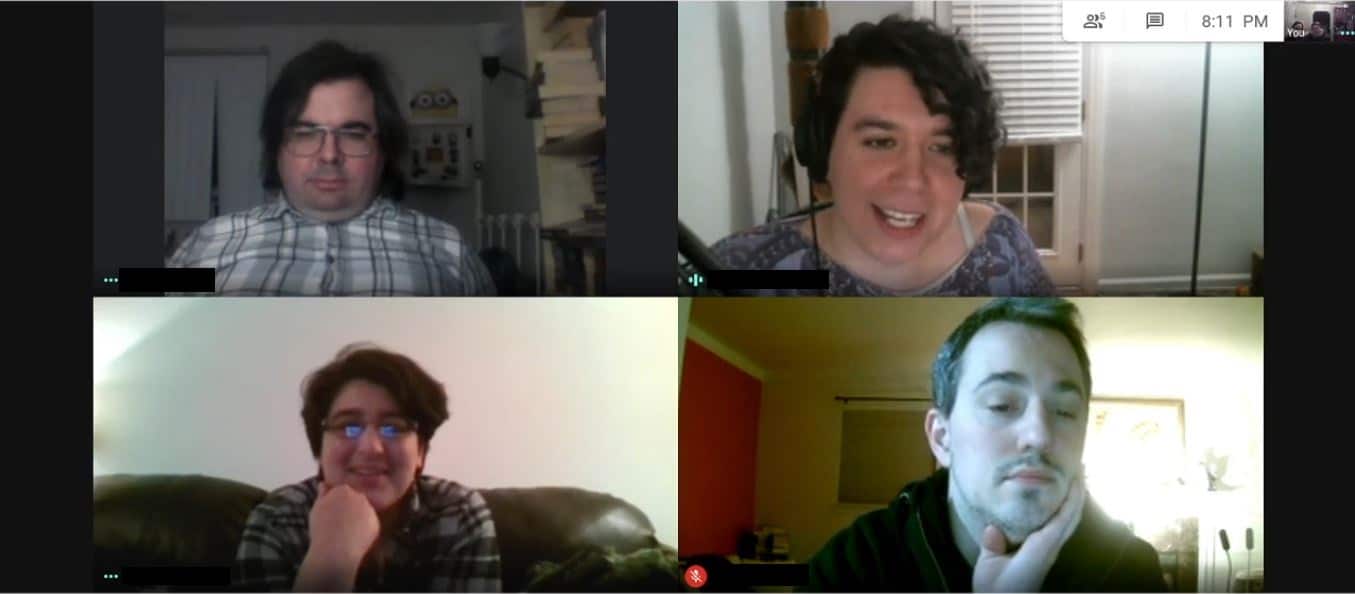The First Year Of Virtual Classes In Review
Polaris Fellowship of Weapons Study switched from in person to remote martial arts classes in March of 2020, and we’ve been remote ever since. 11 months of virtual classes have been an educational experience. Polaris Fellowship is a sword based martial arts school in Michigan. Michigan has been through various stages of shutdown over the last year. Other martial arts schools we know elected to meet in person outside during the warmer months. Polaris made the decision to remain virtual throughout. We decided to stay remote throughout because fewer of our students would be able to attend in person classes during the pandemic.
Before the pandemic, Polaris Fellowship offered Distance Learning on an individual basis, but we had never held a group class remotely. We quickly learned that we needed to restructure our classes to keep our students engaged and learning at all levels.
Restructuring For Remote Martial Arts Classes
When we meet in person, Polaris Fellowship’s classes begin with a group warm up followed by individual drill time. Then we spar, with all levels integrated, followed by breaking off into groups by level for lessons. Our classes have always had all levels intermixed. This allows for students of all levels to benefit from sparring and doing drill together.
When we moved online, the setting with all the students together presented a challenge. We struggled to find material that was relevant to all levels of students being taught in a single group. Our first few classes focused mostly on video analysis of our own students and other schools.
We use video analysis to help our students see their own improvement, and look for opportunities to see the details that they may not (yet) be able to see in real time. This analysis outside of sparring is easily integrated when students are sparring. Valuable though video analysis is we knew we needed to find additional topics for our classes.
When we realized that we would be remote for more than a few weeks, we needed to incorporate physical skills and drill time. We didn’t want our students’ physical skills to atrophy during the time that we held remote classes. We began to split our class into a physical drill portion followed by a lecture or discussion topic.
Finding A Weapon Focus: Sword and Buckler
At Polaris, our students learn different weapons as they progress through the belt standard. This limited which weapons and drills we could focus on with all levels of students together. We began by focusing on the sword and target shield, knife, and cut and thrust sword. These are the weapons that the majority of the students were familiar with.
After a few months, we were running low on individual drills with these weapons. We switched our focus to sword and buckler. Polaris has been developing out Sword and Buckler curriculum for the last few years, and preparing to integrate it into the progression of weapons we teach. We were able to introduce the sword and buckler to all levels of students because it was new to everyone. We have been focusing on the Sword and Buckler for our physical lesson at class for several months.
When we are able to resume in person lessons, we expect to be able to move students to drill with partners and sparring with sword and buckler quickly.
Revisiting The Manuals
Meeting remotely for lessons allowed Polaris Fellowship the opportunity to study the historical manuals in more depth, including the I.33 for sword and buckler. Though Polaris has always used the texts, we haven’t relied on them as heavily as many HEMA schools do. The core of our style comes from a familial style that was taught to our instructors at a previous school. Other styles at our school come from various modern and historical sources, including working with the SCA, community learning with other schools, studying modern and historical manuals, and our study with the weapons.
The remote learning environment presented an opportunity to help our students to become more familiar with the manuals. With the remote classes not allowing for drills with other people, we’ve refocused on braking down plays from the historical manuals, We’ve also focused on the context and history of various texts.
Building Community During Remote Martial Arts Classes
Polaris Fellowship is a community based school. Fellowship is right there in the name. We’ve always focused on building a community that supports each other in learning marital arts and in our lives outside of the school.
As we shifted to remote classes, it’s been important for us to remember the needs of our community members. We’ve learned to leave space for our students to warm up into class socially by starting with a few minutes of chatting. We also finish each class with “Pet Time.”
Pet time is the highlight of my week. During pet time, everyone tracks down their pets and holds them up to the camera. It’s only a minute or two of class, but it allows us to interact with each other casually and personally. Polaris is a learning community but the foundation of our ability to study together is built on trusting relationships. These relationships have to be maintained with personal interactions when we’re not able to see each other in person. Also, PLEASE let me see your pets.
Looking Forward
At Polaris Fellowship, we’re looking forward to being able to be in person again. We’re looking forward to being able to spar with and hit our friends again. I study martial arts in large part because I love the physicality of it. I am eager to get back to it. However, running remote martial arts classes has been educational. We can take some of the things we’ve learned forward when we are able to be in person again.
